Apple's marketing vision
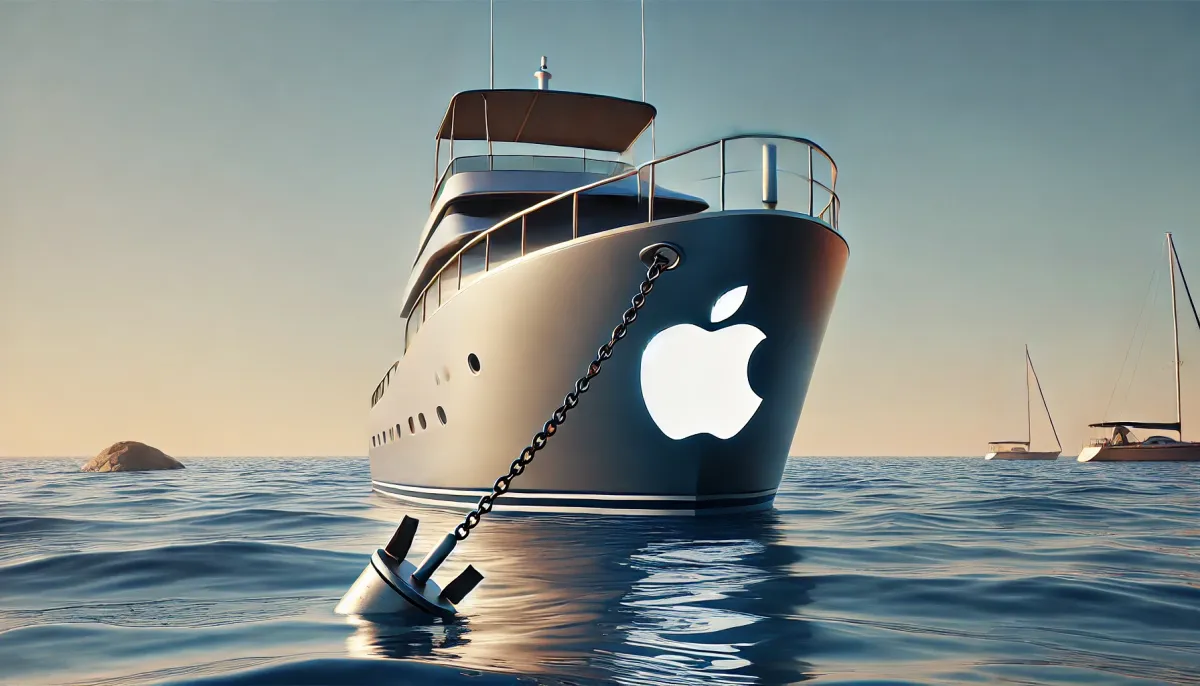
Last week, I told you how I felt about Apple Vision Pro, Apple’s £3,499 headset it claims is the future of personal computing. It left me feeling weird – I felt amazed and overwhelmed, but also lonely and confused. Today, let’s talk about Apple’s positioning strategy (so far) for the nascent device.
It’s a bit of a cliche for a marketer to write (and, possibly, evangelise) about Apple. Anecdotally, the company is the most commonly cited case study in marketing. And for good reason – Apple is so distinct amongst its peers, but also compared to pretty much any company. I hear marketers everywhere saying “our website should look like Apple’s”, or “did you catch that genius Apple ad?” – even in the face of some poor advertising decisions recently, possibly after Apple started in-housing more and more creative a few years ago.
But I think the Apple Vision Pro is a topic worth discussing today, not because it’s a classic piece of Apple marketing, but rather a bit of a departure from what we’ve seen before. Let’s dive in.
The Apple anchor
Typically, Apple launches feature a heavy amount of anchoring. They take something consumers know about, and then say “our thing is just like this, except it’s not”.
The best example of this, I think, isn’t a single piece of advertising, but rather the product names themselves. iPhone. Apple Watch. iPad. These names all anchor in what people know – the iPhone is a… phone. The Apple Watch is a… watch. The iPad, a bit more of stretch, is like a notepad, or a pad of paper.
Some of their product names build on what’s gone before. AirPods are a reference to the iPod, which everyone knew was a music device (and AirPods are actually an evolution of EarPods – the lesser known name for the white buds that came with iPods). And AirPort, which fewer people knew about, which was a wireless router the company once made. The point is, each device is anchored in something people know.
My favourite example of anchoring comes from the iPhone’s launch back in 2007, where Steve Jobs proudly proclaimed, to the shock of the audience widely expecting the iPhone to be launched, that Apple was not launching one product on that day, but three: a “widescreen iPod with touch controls”, a “revolutionary mobile phone” and a “breakthrough internet communicator”.
People know what those things are – even if the last one is a bit weird and vague, it’s self explanatory – you’ll be able to use the internet with this thing.
“An iPod. A phone. An internet communicator. An iPod. A phone. Are you getting it? These are not three separate devices. This is one device. and we are calling it iPhone. Today, Apple is going to reinvent the phone.”
Steve Jobs introduces the iPhone in 2007.
The whole video is worth a watch, as it really is a masterclass in product positioning and framing – but we’re digressing.
The reason this is important, though, is that for decades, Apple has not been in the category creation space. They’ve been in the reinvention space. Taking a well-known thing – computers, MP3 players, phones, tablets, watches, earphones – and making them significantly more popular through superior design, user interaction and positioning.
Yet, the Vision Pro is not one of these things. Yes, headsets have come before it. But they’re not mainstream in the way that any Apple product from the last 30 years has been.
So even though there are some, like the Quest or Playstation VR or HoloLens, Apple is, for the first time in decades, in the category creation business.
Creating a category
So Apple’s challenge, then, is creating a category that consumers will want to join. How does a £3,499 device – way outside of most folks’ wildest budgets – help Apple achieve this? The answer is… it doesn’t.
Apple Vision Pro is Pro for a reason. They’re on a ten year journey here, I think. They’ve set their – if you’d pardon the pun – Vision for what a mixed reality device could be and priced it inaccessibly so they could begin a long journey of testing and refinement. It’s the earliest viable Apple experience, still incredible, but much more work to do, to introduce the category, get the world used to and excited about immersive and mixed reality experiences and build a platform, slowly, but surely.
As it becomes more normal and less weird, and as more people experience it like I did last week, they'll learn what a device like this could unlock. Despite its weirdness not because it, it becomes an acceptable part of life and society.
Apple learns over time, refines the offering by watching what consumers do and don’t use, do and don’t like. Customers learn over time by getting used to the device and watching Apple iterate. And Apple has its real, life go-to-market moment not with the Vision Pro, but with the Vision in the future.
But what kind of a product are they even selling here? Mixed reality? VR? Immersive?
“Spatial computing”.
Two words can change a lot
Before Apple Vision Pro, I hadn’t heard the term “spatial computing”. It seems like Google agrees – as hard as I could try to find references to the category term, I couldn’t find it anywhere.
A handy visit to the Wayback Machine helped me confirm these suspicions – a look at the Meta Quest (from 2022) and Microsoft HoloLens (from 2017), and “VR” (virtual reality) and “mixed reality” are the category terms:
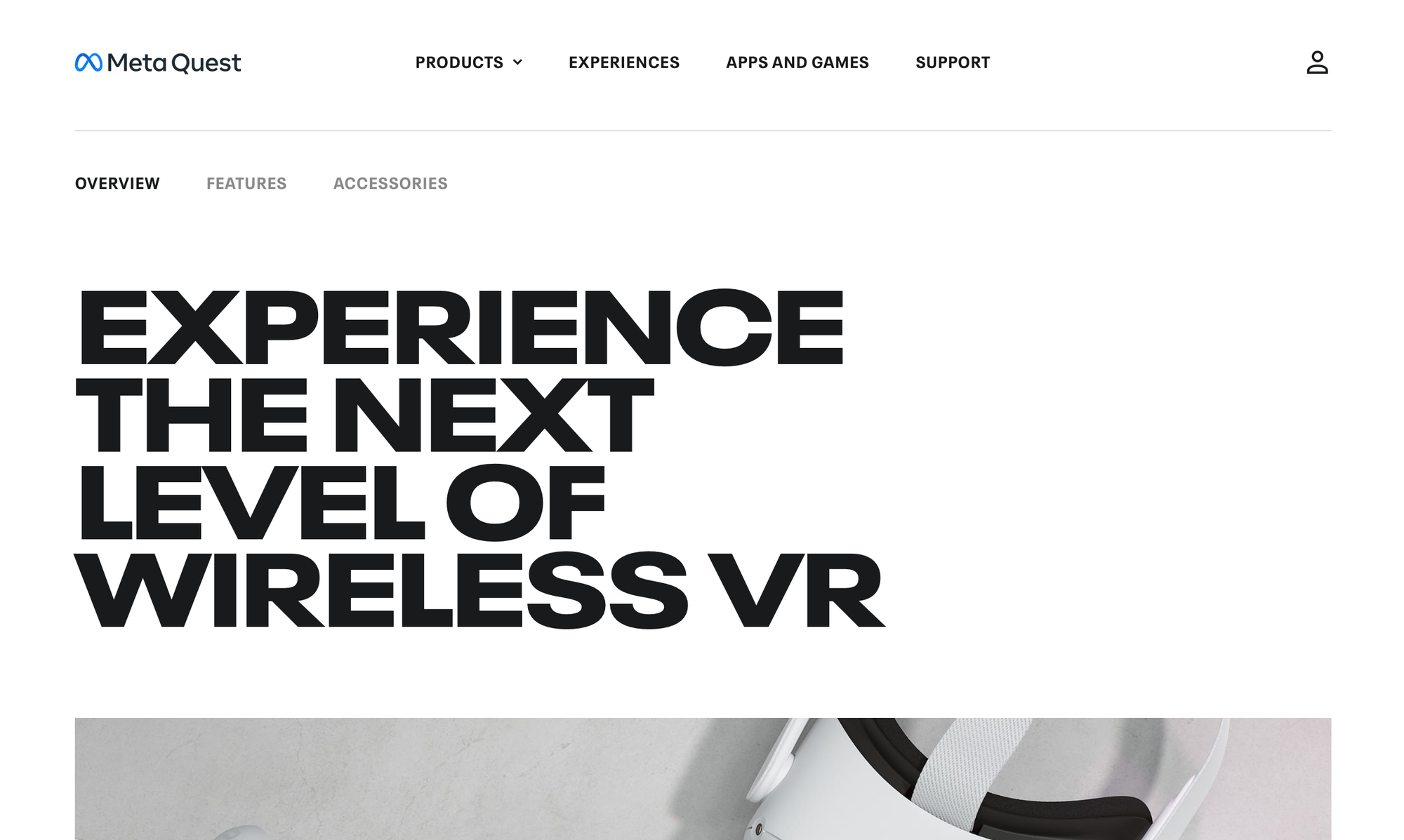
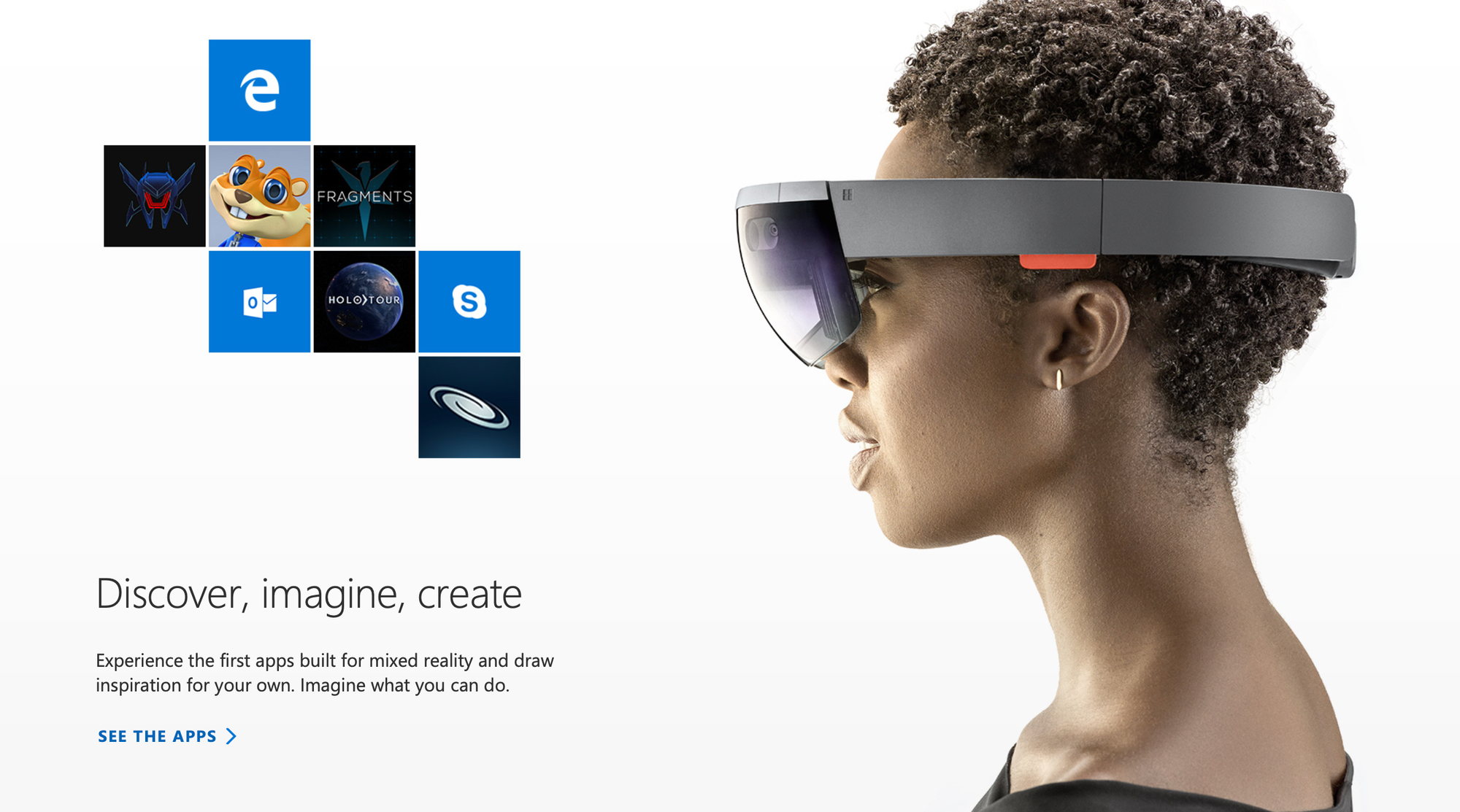
I didn’t need to use the Wayback Machine for Playstation VR because… well, it’s called the Playstation VR. They’re not saying it’s anything else. From today:
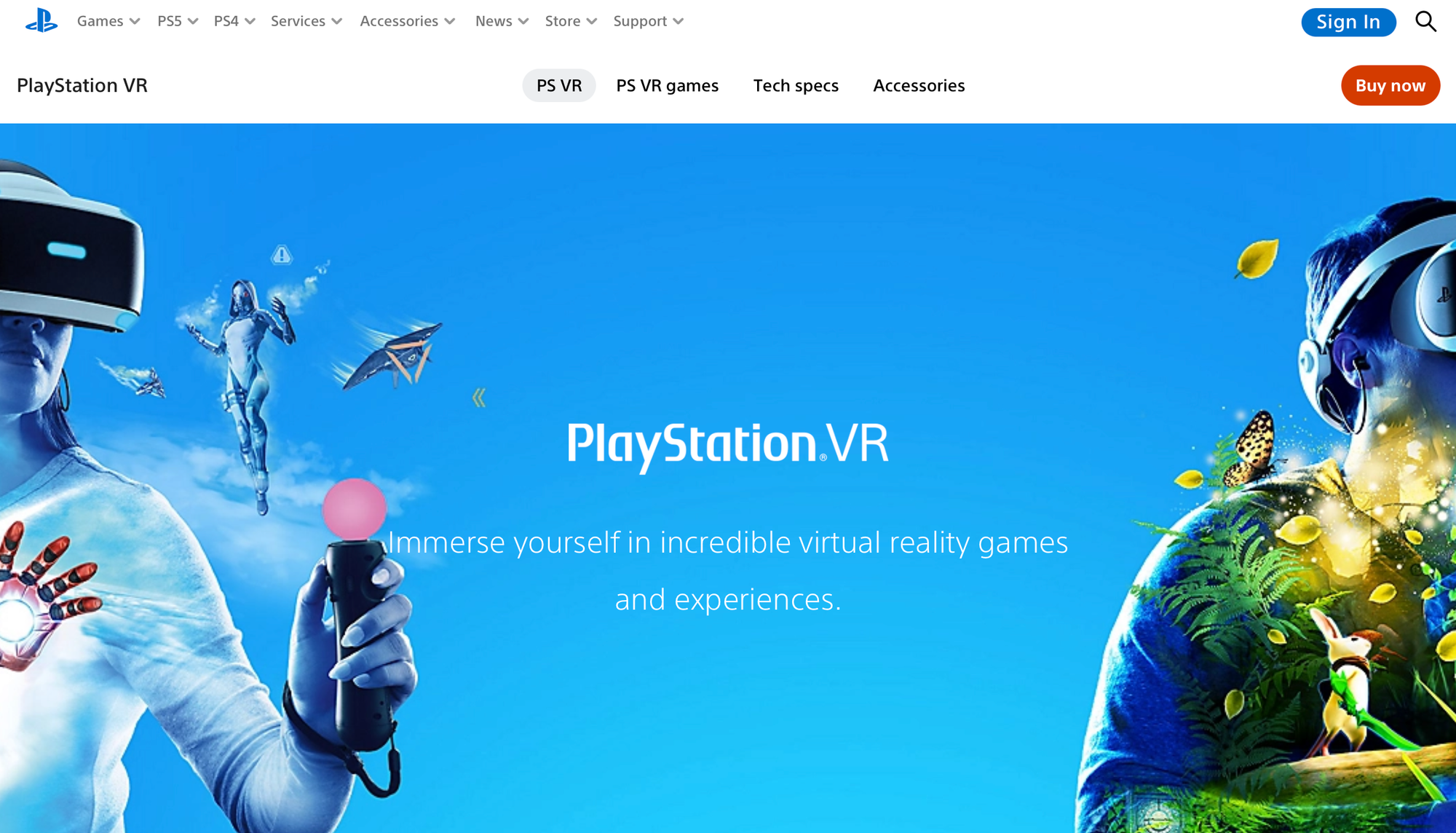
But Apple’s position is different. The Vision Pro is not a mixed reality device, nor is it “augmented” or “virtual” reality. It’s computing, in your space. Spatial computing. This is smart for a couple of reasons:
- It allows Apple to establish the device as a general purpose computer, a bit like the Mac or maybe even an iPad. Setting the tone in two words that you can expect to do computer stuff with it – this is no gaming device.
- It being a general purpose computer means Apple can watch what people use it for, then start to slowly but surely tweak how it’s positioned.
Spatial computing is an excellent expectation setter, then. It gives the impression you can do the same kind of things you can do on a Mac. And although, as I argued in last week’s newsletter, it’s not ready to replace my Mac yet, it could slowly work its way there.
Spatial computing is also an excellent expectation setter. Where is this space? It implies your space, which is what all the product visuals show – the landing page for Apple Vision Pro is full of cosy living rooms and exposed-brick office spaces with windows floating, in space.
I think that’s a little less daunting. Virtual or mixed reality are… a little off-putting, I think. As though the whole device puts you in a reality, a world, that isn’t real. It’s different. Whereas spatial computer… well, that’s still grounded in “real” reality, there’s just some windows floating around.
It’s user control, and I think this is really, really carefully considered positioning. This stuff, though on the surface, sounds like minor detail and unimportant compared to a distribution strategy, is really foundational to how people form impressions and think about the product overall.
Words matter. And so do pictures.
Visual vision
Apple Vision Pro’s landing page is gorgeous – and for the first time, the hardware isn’t the star of the show. It’s the software. The Vision Pro hardware does feature in marketing material, but it’s relegated. On the iPhone’s homepage you scroll 2/3 of the page before seeing any software.
For Vision Pro, it’s right there on the first scroll. A video, showing you watch you see when you put the device on your head. And from there-on in, very few shots of the device itself.
But more importantly than this is what people are doing in Apple’s photos and videos selling the device. Given that it’s a device capable of full immersion – you can take yourself off to Joshua Tree or to the Disney+ movie theatre and be completely immersed – it's wild, but totally expected, that they never show this. Because Apple thinks this is not about selling immersion. People will find immersion, they won't buy it, though.
This is about selling the Vision to the general public – to the everyperson, that this is a device that is grounded in your own reality and that you’re in control. It’s an exercise in making the device appear more approachable and less otherworldly and scary, even if the device actually does make you feel a bit that way when you’re wearing it.
If you’re not sure what I’m talking about, here’s my case-in-point – from Apple’s Newsroom post about Vision Pro:
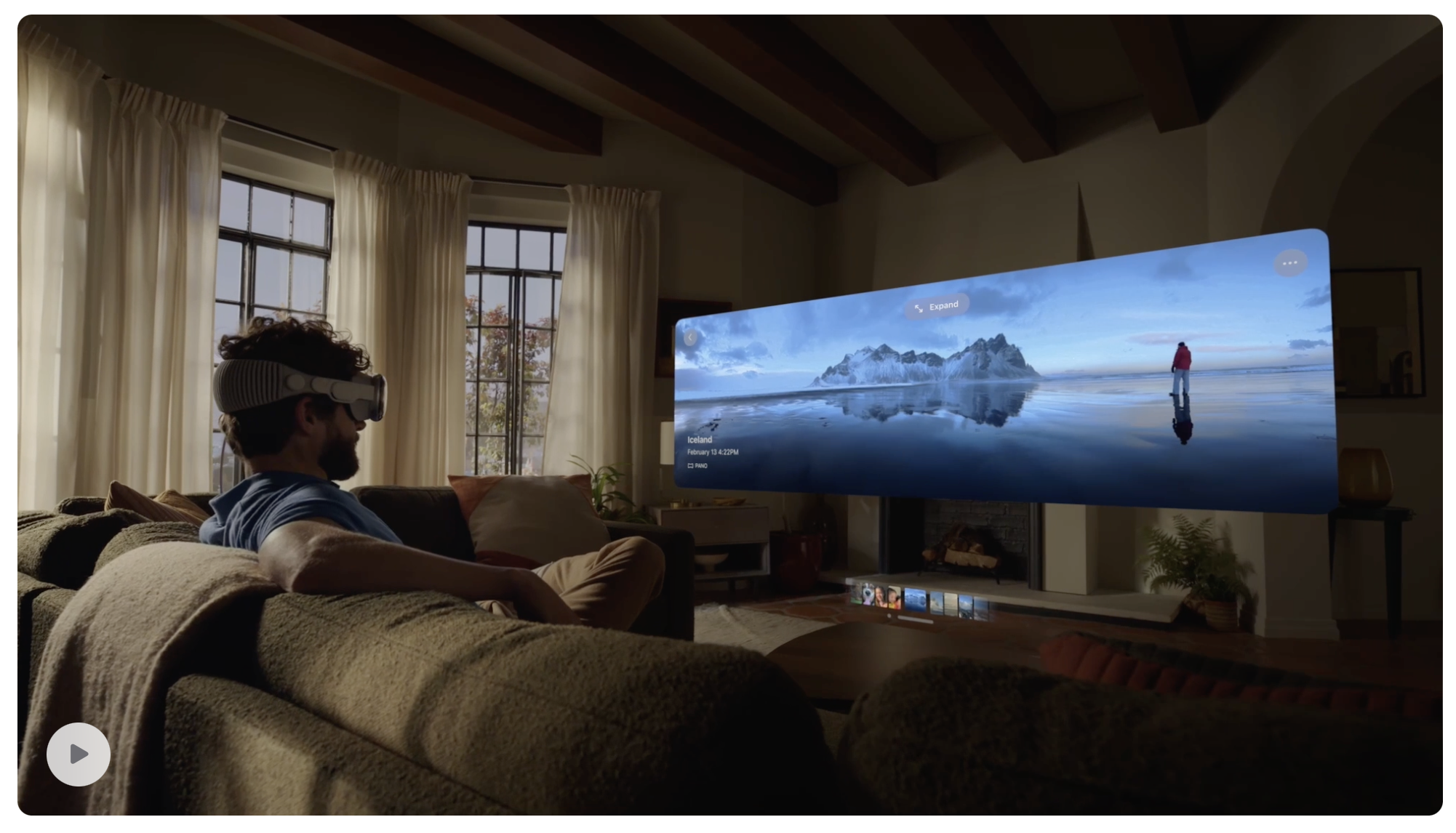
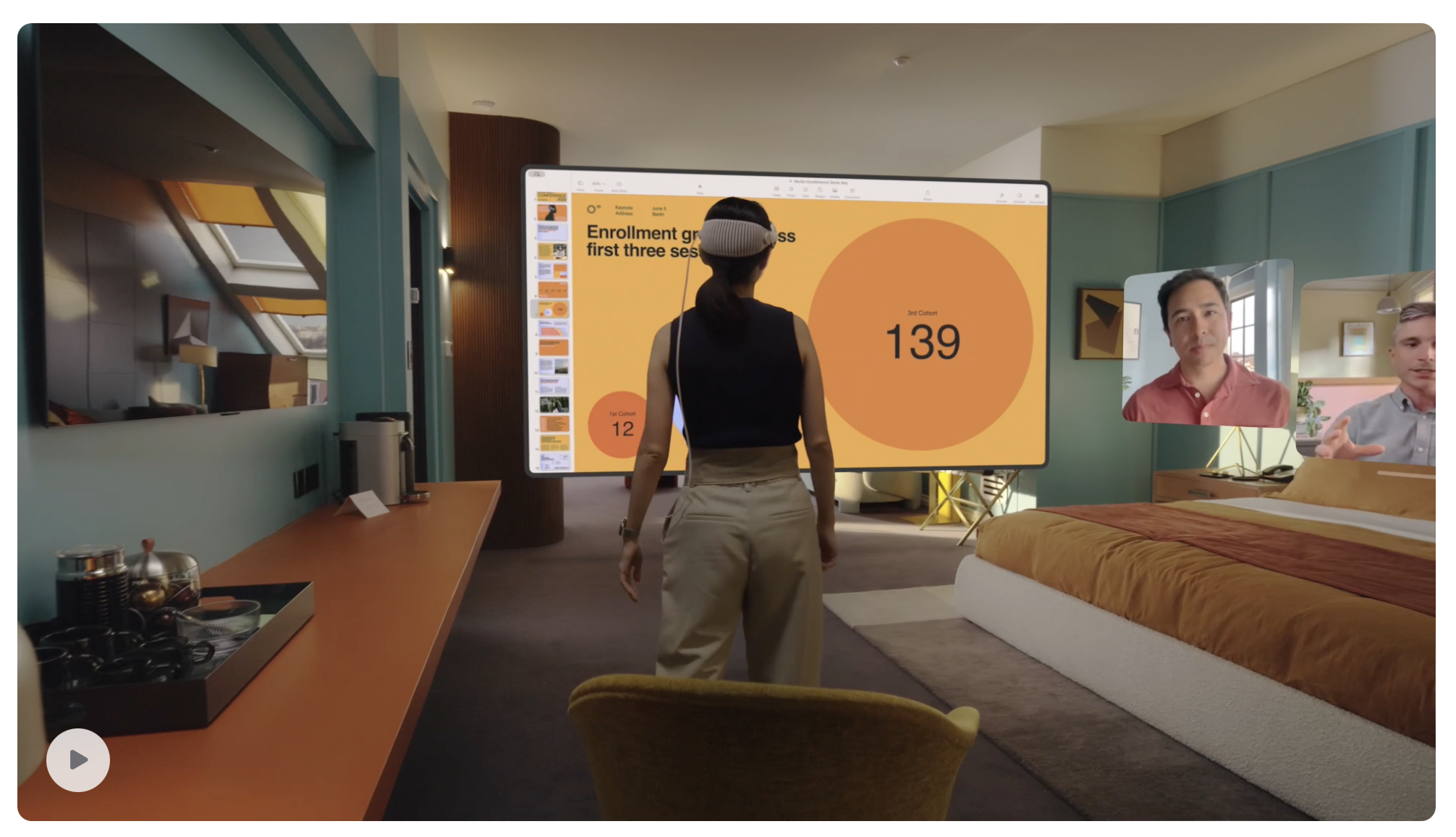
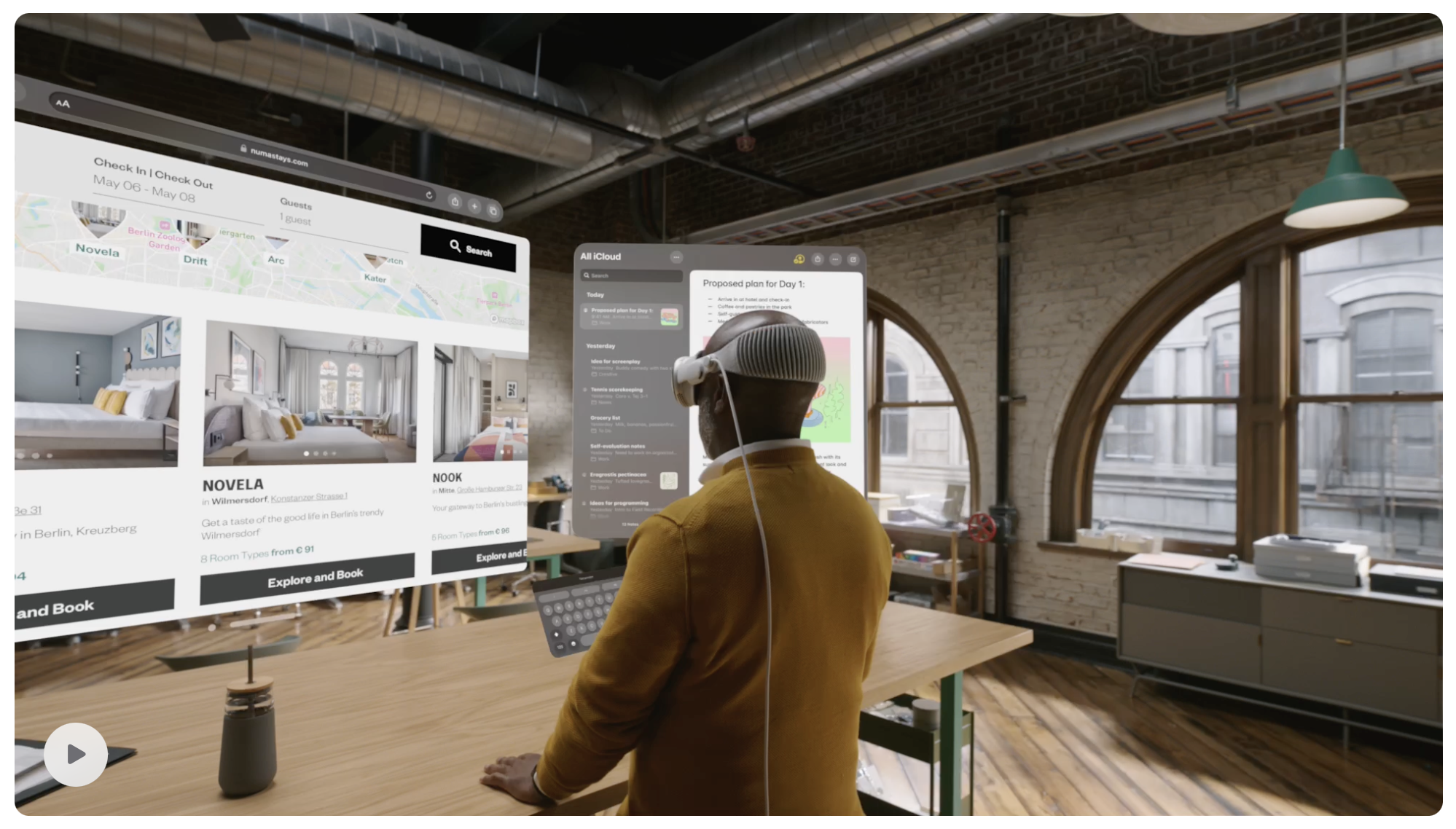
Apple, showing off familiar-looking apps, floating in what could be your own space. No other worlds.
Apple does tout immersive environments in some of their marketing, but it’s always a video showing a user first grounded in their own space, and then scrolling their way into the environment. Under control.
So… it is anchoring after all
Apple is anchoring! Just not in the way they have done before. They realised they couldn’t anchor the device in what we know (it’s no phone or mp3 player), so instead they anchor in space and in computer.
The space is your space. The computer is the computer you’re used to – the floating windows look remarkably like iPhone or iPad apps floating in the sky – UI that is familiar to billions of people. Space. Computer. Spatial Computing.
But, it’s new. It feels futuristic still, somehow. Like two paradigms that haven’t been this close together before now are.
There is some incredibly consistent execution on this idea of spatial computing throughout the whole customer experience. Visuals show you what spatial computing means through floating windows in home spaces. The launch moment at Apple’s Worldwide Developer Conference last year did the same. The Apple Store demo experience focuses mainly on the applications that float in that space, and an Apple employee sits with you the entire time, following a carefully crafted speech that makes clear this is a device grounded in real space.
What’s impressive, I think, is that actually this isn’t marketing principles at play here. It’s product design principles. Spatial computing is how the device should feel when it’s on your head, and Apple’s marketing team have gone to painstaking lengths to represent that product principle in marketing. That can only happen when an organisation is rowing with precision discipline in the same direction, with the same oar movements into the same water to the same rhythm.
That it felt how it looks in promotional materials – exceeded that expectation, in fact – is what world class product marketing is.
The stage is set
The first version of the Apple Vision Pro wasn’t created to sell in great quantities. Mark Gurman over at Bloomberg reported that there could only ever be a million because of supply chain constraints.
No – this device is unique in Apple’s history in that it’s the first device to set the stage, to prime, to become an anchor. To introduce a concept to the world, lean on its popularity from other product categories and make it a thing.
The real Vision, is in the future.





